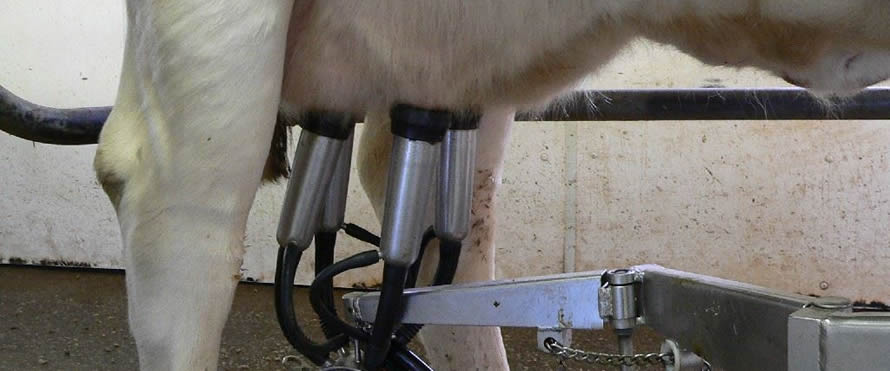
The Sunday News

 Dumisani Nsingo and Roberta Katunga Senior Business Reporters
Dumisani Nsingo and Roberta Katunga Senior Business Reporters
THE country’s milk production has improved after a drop in January and February, recording a two percent increase in March as compared to the same period last year, the Dairy Services Unit has said.According to milk production figures provided by the unit, total milk produced for sale in March was 4 510 930 litres as compared to 4 422 363 litres in the same period last year.
In January milk volumes had decreased with 4 586 860 litres produced compared to 4 783 325 litres in 2013 and in February 3 971 596 litres were produced compared to 4 114 696 litres the prior year.
Agriculture, Mechanisation and Irrigation Development chief dairy officer Mrs Tendai Marecha said a slight increase was seen in March and attributed this to an improvement in weather conditions as well as an increase in the number of milking cows.
“The wet conditions are generally not good for cows, that is why during the rainy season mostly January and February, there was a decrease in production but as the weather improved we have started seeing an improvement.
“Last year we got heifer imports and they have started calving, increasing the number of milking cows available hence the increase in milk production,” said Mrs Marecha.
The heifer importation scheme is expected to provide an additional four percent of raw milk per month.
The Dairy Services Unit figures also showed that in March there was a 1, 27 percent increase in milk intake by processors as compared to initial drops in January and February.
The figures also show that the amount of milk retailed by producers had increased compared to the same period (Jan- March) last year.
In 2013, 1 284 787 litres of milk were retailed by producers while the figure increased to 1 405 196 litres in 2014.
Zimbabwe Association of Dairy Farmers Matabeleland region chairman, Mr Gilbert Moyo confirmed that there was an improvement of almost 25 percent in March from the previous month and farmers were delivering good quality milk to processors.
“There has been a dramatic improvement in production of milk. The use of cans to deliver milk instead of plastic containers has helped reduce bacteria count and farmers are benefiting from good quality and getting value for their produce,” said Mr Moyo.
Mr Moyo said small scale farmers especially in the Matabeleland region were the ones taking the industry to the next level with the Mawabeni milk collection centre having started production.
“Small-scale farmers are really scaling up production and doing well in the region. There is really an improvement with some places that had stopped production having resumed operations and are doing very well,” he said.
National milk production peaked at 256 million litres in 1990 and the lowest record was 36 million litres in 2009.
Like most sectors of the economy, the dairy sector has faced competition from the influx of cheap products with local processors proposing that government must put a levy on milk imports to level the playing field between imports and locally produced products.
Meanwhile, the Umzingwane Milk Centre has resumed its milk processing operations after going for at least 10 months without power.
The milk centre’s electricity supplies were cut off last year after members of the Umzingwane Dairy Association failed to settle a bill of $1 700 to the Zimbabwe Electricity Supply Authority.
Umzingwane Milk Centre is a brainchild of rural farmers drawn from around Umzingwane district and is situated at Mawabeni business centre.
It is home to 45 dairy farmers although only 35 are active.
“We started operations in February after pooling our resources and raising $800. We then entered into a payment plan with Zesa to offset the remaining debt. The centre has been receiving an average of 1 000 litres per month, which we feel is quite little as we should be contributing the same amount in a day.
“We have reduced milk reaching the centre largely due to the fact that most of the farmers are facing transport problems and as such only 10 are delivering their milk for processing. Due to the low deliveries we are failing to meet the demand by our market, which are mostly boarding schools,” said Umzingwane Dairy Association chairperson, Mrs Sheila Lupuwana.
The centre produces more than 1 000 packets of sour milk and 200 packets of pasteurized milk per month.
“We have a truck which used to move around collecting milk but it broke down more than three years ago and this has been affecting collections and volumes. We have also lost large quantities of milk as it goes bad before processing.
“If we are to increase our volumes we need to increase our production and even include products such as yoghurts and fresh cream as part of our product lines. We used to produce these during our prime,” Mrs Lupuwana said.
As part of its strategy to enhance its enterprise, Umzingwane Dairy Association is appealing for land to turn into a fodder farm as well as funding to procure modern milk processing machinery.
“We are appealing to Government to allocate us land which we can use to put our dairy cows together and turn it into a fodder farm. There are huge tracts of land which are not used in the district,” said Mrs Lupuwana.



